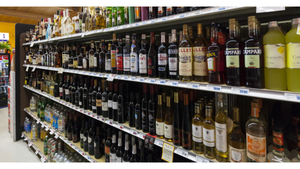SHREDDED CHEESE DRIVES CATEGORY GROWTH
NEW YORK -- Once relegated to whatever space was left in the dairy case, shredded cheese now commands its own special section, as retailers continue to discover that this new kid on the block is fast becoming king of the hill.According to a new report examining the $8.8 billion cheese category, the popularity of shredded cheese has helped propel growth of the entire segment by about 5% a year for
July 6, 1998
ROBERT VOSBURGH
NEW YORK -- Once relegated to whatever space was left in the dairy case, shredded cheese now commands its own special section, as retailers continue to discover that this new kid on the block is fast becoming king of the hill.
According to a new report examining the $8.8 billion cheese category, the popularity of shredded cheese has helped propel growth of the entire segment by about 5% a year for the past two years.
The study, "The U.S. Cheese Market," was published by FIND/SVP, the Manhattan-based consumer research firm.
According to the authors, shredded cheese sales have grown steadily throughout the 1990s, from $719 million in 1991 to an estimated $1.3 billion in 1997. Sales include all varieties of natural shredded cheeses, including mozzarella, cheddar, Monterey Jack and Colby; as well as single, mixed, plain or seasoned varieties.
The reason for their popularity is simple. "With the phenomenon of the over-worked American family well analyzed, it should come as no surprise that prepackaged shredded cheese continues to rack up sales at supermarkets," stated the report.
Bill Drew, vice president of marketing for retail cheese at the Wisconsin Milk Marketing Board, Madison, Wis., agreed, saying the market reflects "the lifestyles of people. They want something that's convenient, and that's not going to go away."
Critical to the convenience factor driving sales is packaging. The use of zipper-lock bags -- pioneered by Sargento -- has become the most common way of selling shredded cheese, according to the report. Kraft, the market leader with a 31% share of the total cheese market, is even using the technique on other types of cheese. The company recently introduced a new "Taste Lock" package for its block cheddar cheese.
Not mentioned specifically in the report, but high on Drew's list describing shredded cheese's popularity, is the ability of manufacturers and retailers to create unique flavor profiles. "Put Asiago in with a blend that might have normally just been Colby cheddar to get a higher taste sensation," he said.
This ability to create new combinations from a finite number of cheeses might help explain why shredded natural cheeses currently account for 20% of supermarket cheese sales. According to the report, shredded items are second only to block natural cheese and American cheese (each comprising 27% of sales).
Using data from Information Resources Inc., Chicago, the study revealed that the value-added nature of shredded cheese made it one of the most expensive cheeses in the store, averaging $4.33 per pound for name brands. Private-label items provided comfortable margins for stores as well, even though they cost consumers roughly 24% less per pound than national brands.
In the eyes of consumers, convenience is more important than price, said Drew. "Make it easy, and they will come."
About the Author
You May Also Like




